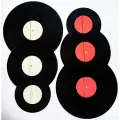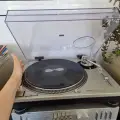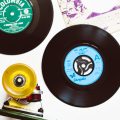So, you know how to work a record player but you want to get to know how do vinyl records work? Or, perhaps you simply want a better understanding of the manufacturing process, so as to better understand the costs of what goes into building a record, so you might know whether or not you are being ripped off?
Well, you have come to the right place, for today the query is how do records work, and we are seeking to answer it by exploring the manufacturing process and how this can have untold effects on the resulting vinyl record.
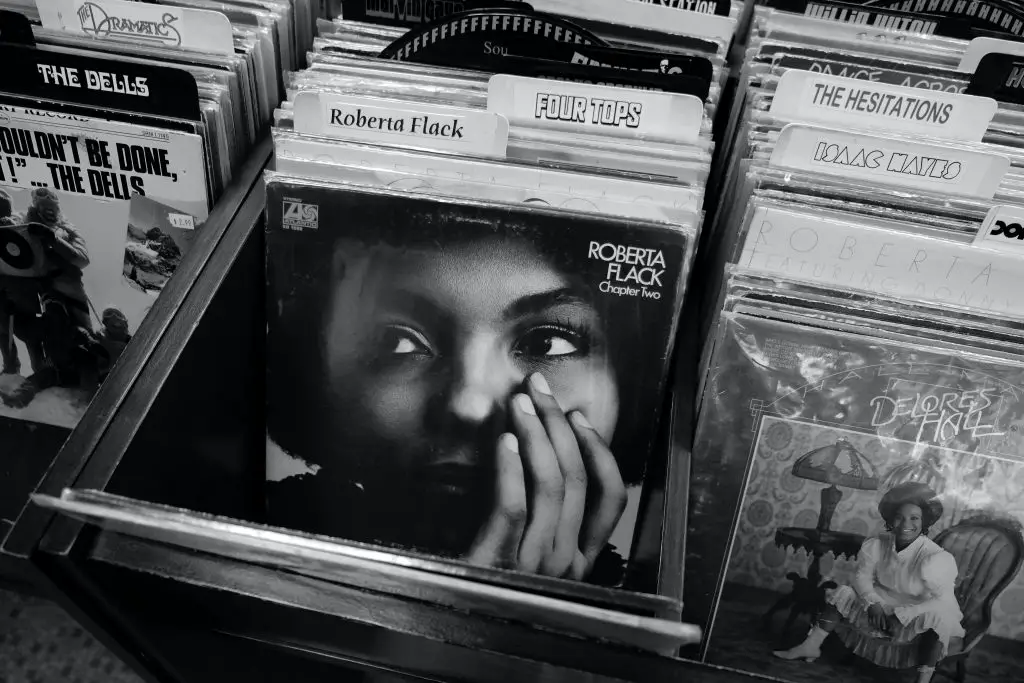
Why Making Vinyl Records is Different?
First up in our quest to understand how do vinyl records work, we must first come to know what makes the humble vinyl record so different. Besides the more material and surface-level differences, there are a number of things that make printing onto a vinyl disc a singular experience, and one that has to be catered for.
The frequency range of a vinyl record is significantly less than other mediums – digital formats like the CD, for example – for being such a physical format. In essence, listening to a record requires that a record player’s stylus trace itself over the record grooves where there are delicate sound waves imprinted, not the only difference between CD vs vinyl.
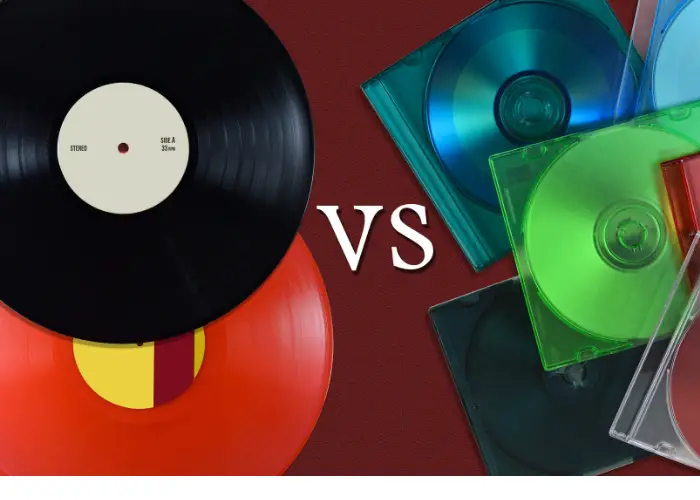
If these sound waves and their original sound are too intense, then the tone arm and other of the record player’s parts will be thrown off in the process like a rodeo rider on a wild bull. Thus, it is the job of the engineer to make sure that the master recording takes this into account and ensures that the vibrations are not too intense when they are to reproduce sound from the record.
The round disk shape of the record will also spell trouble for the recording of the music imbibed within. The grooves are smaller towards the center of a record, something inherent to the circular shape which can change sound vibrations for the worse, there being a significant degradation in sound quality towards these smaller grooves, no matter the quality of the record player nor the fidelity of the recorded sound.
These are all minutiae about the sound waves that need to be taken into account by the producer, the artist and the mastering engineer, so that all can come to some sort of agreement.
Step 1
When an agreement has finally been met, then the mastering engineer gives the go-ahead and the master disc is born. Some mastering engineers even perform this part of the operation of recording sound themselves, though this is not very commonplace.
The mastered audio is sent through a cutting lathe, which itself performs the exact opposite of what an ordinary stylus would be tasked with doing. Where the stylus vibrates and turns these vibrations into sounds, the cutting lathe, using an industrial diamond, transfers the vibrations data of the music into the spiral groove of the record.
This process of how are vinyl records made is an incredibly heated one, and we do not just mean ideologically. The lathe, in fact, produces so much heat that it constantly needs to be cooled down with helium – the whole time – lest there be a runaway fire going on upon the factory floor.
Just as it might be when burning modern music to CD with a converter tool, the music is cut in real-time, and will thus take however long the release is. The cutting lathe will do the hard part, making sure to properly reproduce sound waves. But the engineer on hand will be the one who makes sure that the adequate and relevant gaps are left between the songs on a record (or that none are left whatsoever if that be the case).
This is an incredibly physical process, far removed from the recording process, where each part is to involve an ever so analog human at every point. As you can see, even the scrolling forth of the cutting lathe so as to ensure adequate spacing between tracks on a vinyl record is of the utmost importance and can only be performed by a human (as yet).
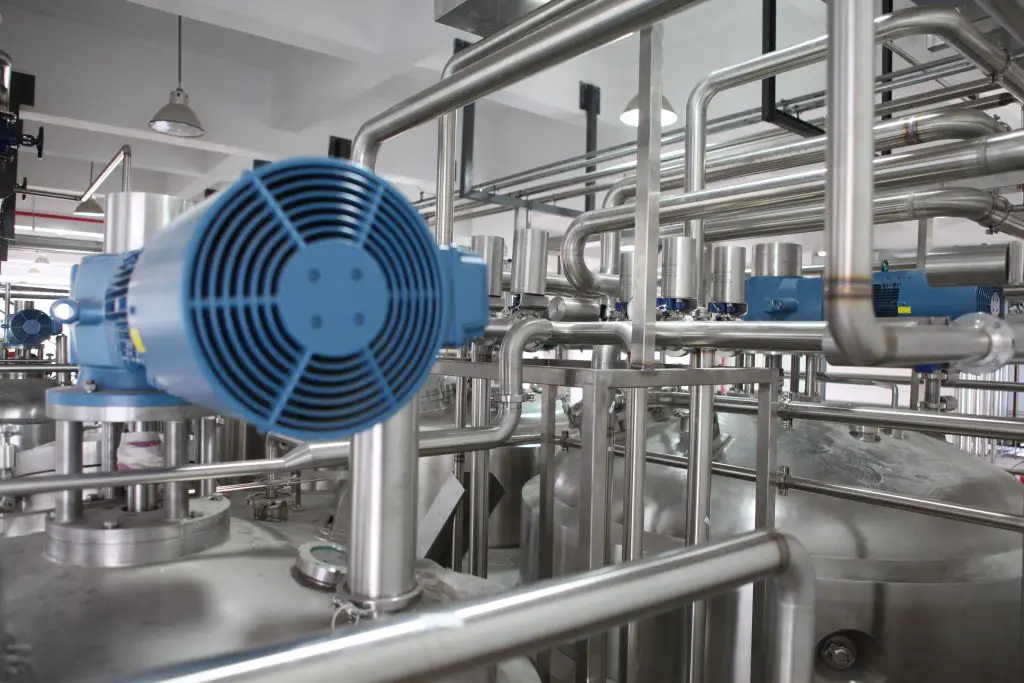
Step 2
And then another disc – what is referred to as a ‘stamper disc’ – is produced. The master disc is taken and shorn of as much dust as possible at this part of the process, for this dust creates sound vibrations and not the good kind.
The master lacquer disc is then sprayed with silver, before being submerged in a nickel bath and fed electrical signals, to encourage the process of electroplating. This feeding of electrical signals and electroplating incites the nickel to mate with the disc and fill in the grooves.
The master disc is then taken out of the nickel bath and, having been electroplated, can be torn into two separate discs which are intended to be exact mirror images of each other. There is the original master disc with the grooves, and then there is the byproduct of the electroplating. This latter is what is known as the ‘father’ disc, and is the disc used to force the impression of the music into the hot wax so that it can eventually playback sound.
At this stage, as in many other parts of the process, there are intense checks for quality purposes. Here, for example, the quality of the electroplating process is checked before going ahead, so as to save any waste of money later down the line.
Since the ‘father’ disc is made of ridges instead of grooves, another copy has to be made through electroplating which, eventually, will be its mirror image, but with grooves instead – what is referred to in the biz, and in direct gendered relation to the previous terminology – as a ‘mother’ disc. The wonder of electromagnetic devices! Here, the producer, artist, and engineer will be asked to listen and to check whether they are happy with the results of the process on the music thus far.
Step 3
With a thumbs up from all three parties, the final and most famous part of the pressing and production of the vinyl records can begin, and the final sum of how do vinyl records work can finally be answered.
Even though so much effort went into the creation of the metal master and of the ‘stamper’ disc, they can only last so long as part of the pressing process. That’s just how vinyl records work, sadly. They are an inherently antiquated and inadequate format in a lot of ways, and in the printing and pressing process of how is sound recorded on vinyl, a lot of pressure is put on these discs to deliver.
Industry standards suggest that ‘stamper’ discs begin to give out after roughly 1000 pressings, after which the manufacturer will want to take a look at the recording again and see how the disc matches up, and whether a new record will need to be made.
Pellets of polyvinyl chloride – the key ingredient of what are vinyl records made of – are melted and squeezed by hydraulic press into what are known as ‘biscuits’, much akin to the shape of a hockey puck.
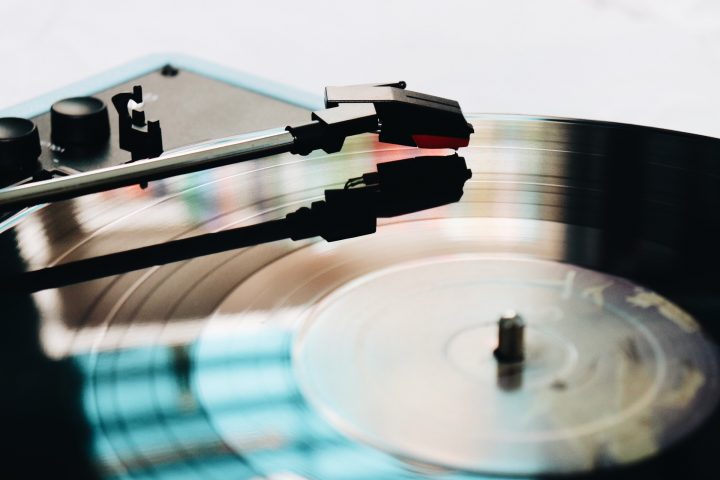
With the stamper discs for each respective side of the release loaded above and below each puck of vinyl, the two stampers come together hot and with around 100 tons of pressure, bringing out in the plastic the very mirror of its impression, while the inner labels are stuck on simultaneously into the center of the disc.
The machine then trims off the excess and cools the record in water. All of this occurring within the space of about 30 seconds! Some record player cartridges take longer than that to get started when you use the auto cue button! Ode to mechanical energy – where would we be without ye!
Final Touches
As before, the sound waves are tested one last time. Test pressings of the batch are made and sent to the artist and the producer and the engineer so that they can listen through and make sure that the resulting music is as close to their intention as possible. Such is the way with how vinyl records work that some sacrifices have to made, some meeting has to be made in the middle, though hopefully never at the expense of the holistic vision of the piece of work.
Once they have been approved, they are then boxed up with their respective sleeves and jackets before being shrink wrapped and sent off straight to the stores where you the listener will sup the music with your own ears.
From the sound waves in the grooves of the record, which meet the stylus within the cartridge and turn this vibrational data into sound waves, which is then sent through the turntable preamp and out through the cabling into the stereo system! Who knew that such simple electro mechanical principals could yield such powerful and devastating results.
Final Tones
So, there you have it! Hopefully, you are now feeling better informed about how sound waves work and about how do vinyl records work, as elucidated through the manufacturing process itself. Through harnessing mechanical energy, electrical energy, and untold other things, these manufacturers can use very simple tenets of electro magnetics to produce just about any sound you can think of and then press it onto hallowed wax, after which the tiny electrical coils within the record player convert those vibrational nuggets into the sweet sounds one so desires, where the record spins and has all mesmerised.
FAQs How Do Vinyl Records Work
How does music get on a vinyl record?
The process of how do records make sound follows a series of simple but highly specific electro mechanic principles: 1) the master recording is cut onto a master disc 2) the master disc is electroplated into a ‘father disc’ 3) this father disc is electroplated again into a ‘mother’ disc upon which the former’s sound quality can be tested 4) the father is used to stamp its impression into 1000 records before being replaced, using plenty of heat and 100 tons of pressure to get its point across.
Does vinyl actually sound better?
This is a matter of contention that is pretty much always up for debate amongst audiophiles. No matter how records work or the music imbibed within, many simply believe that experience of listening to music on vinyl records is better. Knowing how vinyl records work, we can see that they offer a significantly reduced frequency response than digital audio, otherwise the audio would give the stylus moves, bringing about that infamous jumping and scratching sound. Digital audio does offer a far broader frequency spectrum, but at the cost of warmth and a colorful liveliness that some simply cannot do without.
Do vinyl records last forever?
Nothing lasts forever, and vinyl certainly less than others. To play music on vinyl, the stylus needs to literally scrape itself across the surface of the record, through the grooves, in order to turn this vibrational data into sound which can then be projected forth through the speakers. This process, over time, degrades the disc, to the point, if played long enough and frequently enough, that it cannot be played anymore. There are a whole host of other factors which can affect the lifespan of a record too, not least the environment in which they are stored.
Can you hear a record without speakers?
Funnily enough, you actually can, though it will not be much of an experience. If you do not turn on a stereo system before spinning a disc on a turntable, chances are that you will have noticed a sound coming from the disc anyhow. These are the literal vibrations within the grooves as they would be heard without any amplification or translation into sound waves. Et voila! You can also do the same with a British 5£ note, for they are now made with plastic and can thus conduct the vibrations imbibed within the grooves if spun correctly. The more ya know!


